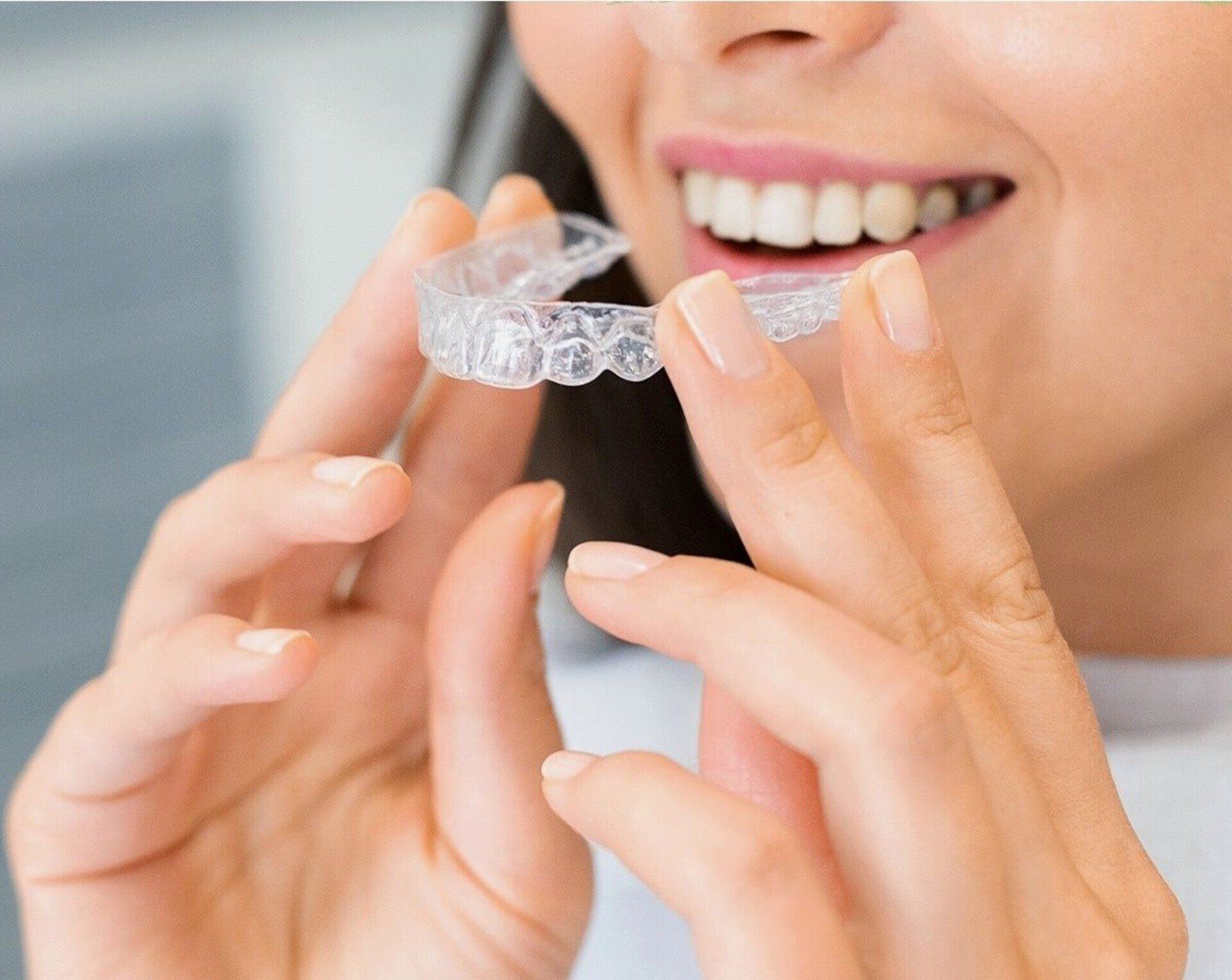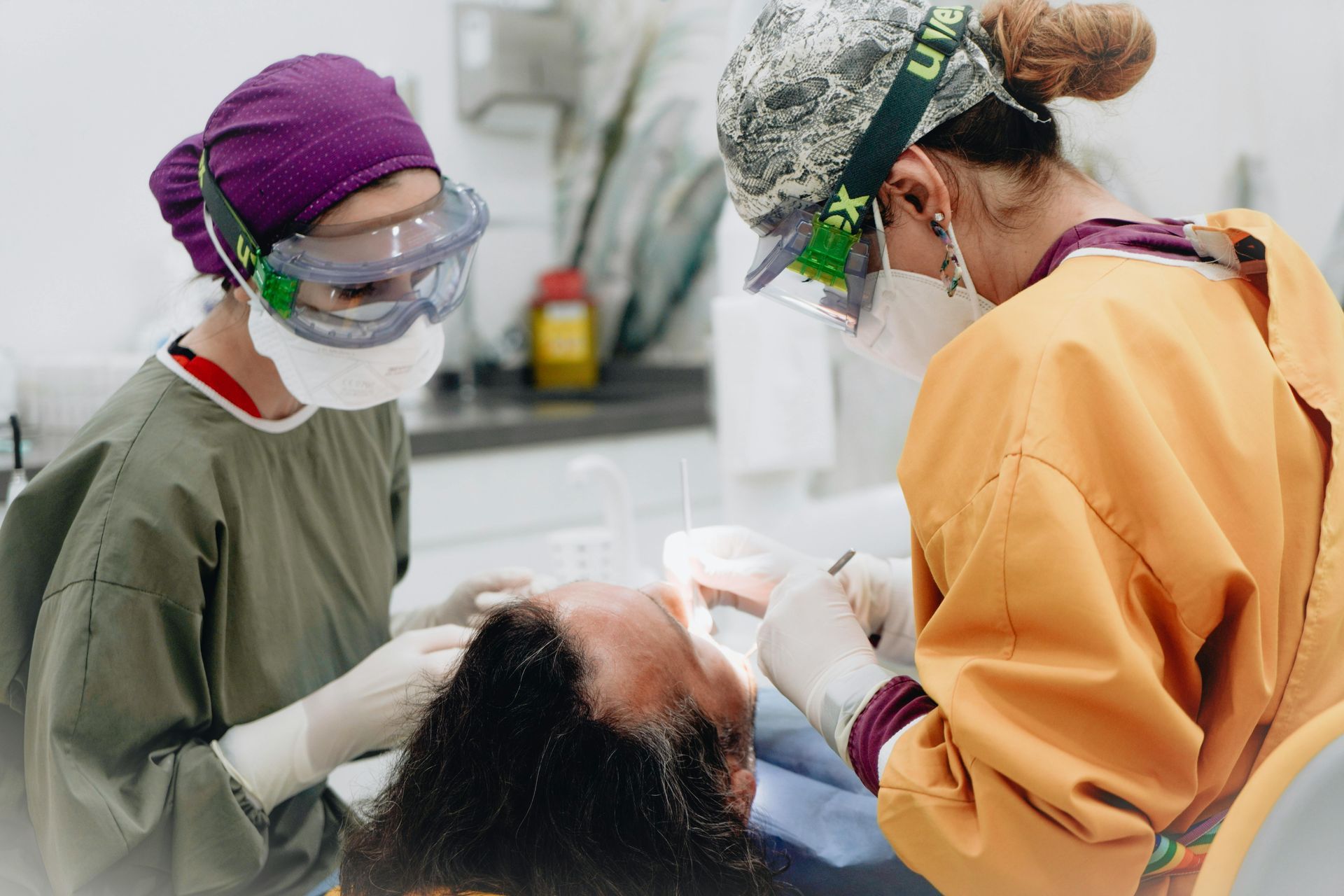Invisalign vs. Competitors: Discover the Unique Advantages
What is Invisalign?
Invisalign® is an innovative orthodontic treatment designed to transform crooked teeth into a beautiful smile using clear plastic aligners. Unlike traditional metal braces that rely on metal brackets and wires, Invisalign aligner trays are custom-made to fit over your teeth, gradually guiding them into straighter positions.
Key Features of Invisalign®:
- Invisible Appearance: Invisalign trays are clear, making them a discreet orthodontic option compared to metal braces.
- Comfortable Fit: Made from smooth plastic, Invisalign aligners eliminate the sharp edges and irritation often caused by traditional braces.
- Removable: Aligners can be removed for eating, allowing you to enjoy your favorite foods without worrying about sticky foods or dietary restrictions.
- Easy Maintenance: Removable trays make maintaining oral hygiene simpler by allowing normal brushing and flossing.
- Custom Treatment Plans: Each set of aligners is tailored to the specific needs of the patient, adjusting incrementally as treatment progresses.
Invisalign offers a modern solution for achieving a confident smile without the inconvenience of traditional metal braces, providing a virtually invisible and comfortable path to straighter teeth. Whether addressing dental or orthodontic issues, Invisalign is a popular choice for those seeking a healthy and beautiful smile.
Advantages of Invisalign
Invisalign® offers a host of benefits that make it an attractive choice for individuals seeking orthodontic treatment. From its nearly invisible design to its comfort and ease of use, Invisalign provides an effective and convenient solution for achieving a straighter, more confident smile without the drawbacks of traditional metal braces.
Discreet Appearance
One of the standout features of Invisalign aligners is their discreet appearance. Crafted from clear plastic, these aligners are virtually invisible, allowing you to carry on with your daily activities without drawing attention to your orthodontic treatment. This is especially advantageous for adults and teens who prefer a subtle approach to straightening their teeth.
Comfortable Fit
Invisalign aligners are designed for comfort. Unlike traditional braces that use metal brackets and sharp wires, Invisalign trays are made from smooth, soft plastic that contours comfortably to your teeth. This helps prevent irritation to soft tissues like the gums and cheeks, making the treatment process gentler and more pleasant.
Removable and Easy to Clean
One of the primary conveniences of Invisalign is the ability to remove the aligners. This feature makes it easy to maintain proper oral hygiene by allowing you to brush and floss your teeth as usual, eliminating the risk of oral health issues often associated with conventional braces, such as trapped food particles and potential gum disease. Simply clean the aligners before reinserting them, ensuring hygiene and freshness.
Reduced Dietary Restrictions
Invisalign aligners afford you the freedom to enjoy your favorite foods without worry. Since the trays are removable, you can eat sticky foods or crunchy treats that might be off-limits with metal braces. This means fewer dietary restrictions and the ability to enjoy a more varied and satisfying diet during orthodontic treatment.
Fewer Orthodontic Appointments
Invisalign treatment typically requires fewer visits to the orthodontist compared to traditional braces. With Invisalign, you receive a series of aligners at the beginning of your treatment plan, which are switched out every few weeks at home. This reduces the need for frequent in-office adjustments and allows you to progress through the treatment process with greater convenience and flexibility.
By opting for Invisalign, you are investing in a state-of-the-art orthodontic solution that provides not only straighter and healthier teeth but also a hassle-free experience that integrates seamlessly into your lifestyle. Whether you are dealing with minor dental issues or more complex orthodontic challenges, Invisalign offers a clear path to a confident and beautiful smile.
Technology Behind Invisalign
Invisalign® is a popular orthodontic option known for its innovative use of technology to create straighter teeth and healthy smiles. Unlike traditional metal braces that rely on metal brackets and wires, Invisalign uses cutting-edge digital techniques to design customized aligner trays. This orthodontic treatment provides a modern solution to correct crooked teeth while maintaining comfort and flexibility in your lifestyle. Let’s delve into the advanced technology that makes Invisalign an appealing choice over other aligners like conventional braces and metal braces.
Advanced Treatment Mapping
One of the hallmarks of Invisalign® technology is its advanced treatment mapping system. Before the creation of the aligner trays, orthodontists employ sophisticated 3D imaging software to map out your entire treatment process. This software allows for precise measurements and simulations, ensuring that each aligner shift your teeth incrementally closer to achieving a beautiful smile. This customized and detailed approach contrasts greatly with the more generic methods used with metal brackets and wires in traditional braces, providing each patient with a tailored treatment plan.
Dentist or Orthodontist Supervision
Invisalign® treatment is always under the careful supervision of a qualified dentist or orthodontist. Regular check-ups are part of the treatment plan to ensure the aligners are progressing according to expectations and that no dental issues arise. This professional oversight ensures that the teeth aligners are adjusted promptly, maintaining the effectiveness and efficiency of the alignment process. Unlike some direct-to-consumer aligners that lack professional guidance, Invisalign places a strong emphasis on the oversight from dental professionals, ensuring the best possible outcome for oral health.
Predictability of Results
The use of advanced technology in Invisalign® not only maps out the treatment trajectory but also enhances the predictability of results. Patients are provided with digital renderings of their future smile, allowing them to visualize the potential outcomes. Invisalign's precise design process often leads to fewer unexpected developments compared to traditional braces, which can sometimes involve uncomfortable adjustments due to the less flexible nature of metal wires and sharp edges. This predictability brings confidence to patients, ensuring that they can anticipate straighter teeth and a more confident smile.
Comparison with Traditional Braces
When it comes to orthodontic treatment, choosing between Invisalign® and traditional braces can significantly impact your journey to achieving a straighter, healthier smile. Both options aim to correct orthodontic issues, but they come with distinct differences that patients should consider before making a choice.
Aesthetic Differences
A major factor that sways many toward Invisalign® is its nearly invisible appearance. Unlike traditional metal braces with metal brackets and metal wires, Invisalign® aligner trays are crafted from clear plastic, making them a discreet option for those seeking a beautiful smile without the aesthetic drawbacks of metal braces. This feature is especially appealing to adults and teens who are self-conscious about wearing noticeable orthodontic appliances. Invisalign® allows for a confident smile throughout the treatment process, without the sharp edges and visible apparatus typical of traditional braces.
Comfort Levels
Comfort is another significant consideration when choosing between orthodontic options. Invisalign® aligners are custom-made from smooth plastic aligners that fit snugly over the teeth, reducing irritation to the soft tissues of the mouth. In contrast, traditional metal braces often consist of metal wires and brackets that can cause discomfort, mouth sores, and irritation. This can lead to oral health concerns if not managed properly. Additionally, Invisalign® wearers experience fewer dietary restrictions, as aligner trays can be removed when eating, allowing individuals to continue enjoying their favorite foods without concern for sticky foods and food particles getting trapped.
Maintenance and Hygiene
Maintaining oral hygiene during orthodontic treatment is crucial for preventing issues such as gum disease and cavities. Invisalign® provides a significant advantage in this regard because the aligners are removable. This means that users can brush and floss their teeth with ease, ensuring better oral hygiene compared to conventional braces. Metal brackets and wires can make cleaning challenging, leading to trapped food particles and increased risk of dental issues. With Invisalign®, patients can maintain their regular oral hygiene routine, which supports a healthier mouth and a more effective treatment process.
To summarize, while both Invisalign® and traditional braces aim to address crooked teeth and deliver a straighter, more confident smile, the differences in aesthetics, comfort, and maintenance create a compelling case for choosing Invisalign® for those seeking a modern, convenient, and effective orthodontic treatment option.
Comparison with Other Clear Aligner Systems
When considering orthodontic treatment, it's essential to compare various options available to ensure you choose the best one for your needs. Invisalign® emerges as a standout choice over other clear aligner systems due to its unique features and benefits. Here's a comprehensive look at how Invisalign® compares.
Material Differences
The choice of material in an orthodontic treatment greatly influences comfort and effectiveness. Invisalign® uses innovative patented SmartTrack® material that distinguishes it from other plastic aligners. This material is designed to improve teeth movement and ensure an optimal fit throughout the treatment process. Unlike other aligners that may use standard plastics, Invisalign's SmartTrack® offers:
- Increased Comfort: The flexible material is gentler on soft tissues, reducing the risk of irritation compared to aligners with sharp edges.
- Enhanced Precision: Better conforming to the shape of your teeth for more predictable teeth movement.
- Durability: Reduced chances of distortion over time, maintaining its structure throughout the treatment.
Customization Options
Invisalign® offers unparalleled customization in the realm of teeth aligners. Its advanced technology allows for:
- Personalized Treatment Plans: Each set of aligner trays is tailored to your specific orthodontic issues, ensuring each step towards straighter teeth is as efficient as possible.
- Versatility: Suitable for a range of dental issues, from simple to complex cases, unlike some aligners limited to minor adjustments.
- Virtual Previews: The opportunity to view a digital representation of prospective outcomes, giving you a clear insight into how your smile will transform.
Cost Considerations
Cost is an important factor for anyone considering orthodontic treatment. While Invisalign® can sometimes be more expensive than other aligners, the investment reflects the extensive research, technology, and customization that come with the treatment:
- Value for Money: The ability to address a broad spectrum of orthodontic and dental issues efficiently often means faster results and fewer adjustments, which can ultimately lower overall spending in the long term.
- Insurance and Payment Plans: Many dental insurance plans partly cover Invisalign® treatment. Flexible payment plans might be available to manage costs better.
- Reduced Additional Costs: With fewer adjustments and less likelihood of emergency visits due to broken Metal brackets or wires typical in Traditional braces, overall treatment costs can be more predictable and manageable.
In summary, Invisalign® presents a sophisticated and effective alternative to other clear aligner systems, offering superior comfort, tailored treatment solutions, and a cost structure that reflects its substantial benefits. This makes it a compelling orthodontic option for achieving a healthy, confident smile without compromising on your lifestyle or oral health.
Potential Drawbacks of Invisalign
While Invisalign® offers numerous benefits as an orthodontic treatment option, it is important to consider some potential drawbacks associated with its use. Understanding these limitations can help individuals make an informed decision about their orthodontic options. Below are some key considerations when evaluating Invisalign®.
Compliance Requirements
One of the primary factors contributing to the effectiveness of Invisalign® is patient compliance. Unlike Traditional braces, which are fixed to the teeth, Invisalign® relies on removable plastic aligners that patients must wear for 20 to 22 hours a day. Consistency in wearing the aligner trays is crucial to achieve desired results. Failure to adhere to this requirement can prolong the treatment process and may compromise the outcome, leading to less than straighter teeth.
- Patients must be diligent in following their treatment plan.
- Aligners must be removed when eating and drinking anything other than water.
- Neglecting to reinsert the aligners promptly can delay progress.
Limited Effectiveness for Complex Cases
Invisalign® is highly effective for addressing a variety of dental issues, like mild to moderate crooked teeth or achieving a beautiful smile. However, when it comes to more complex orthodontic issues, such as significant crowding or severe bite problems, Traditional metal braces might be a more suitable choice. This is due to the superior ability of metal brackets and metal wires to exert necessary pressure to realign teeth in complex scenarios.
- Best suited for mild to moderate orthodontic issues.
- Metal braces might handle complex dental adjustments more efficiently.
- Consultation with an orthodontist is essential to determine suitability.
Possible Discomfort During Adjustments
While Invisalign® aligners are generally more comfortable than Conventional braces due to their smooth surface and lack of sharp edges, some discomfort may still occur, particularly during the initial fitting of a new set of aligner trays. This discomfort is a natural part of the adjustment process that occurs as the aligners gradually shift teeth to a straighter position and is usually temporary.
- Initial discomfort is common with new aligner trays.
- Sensitivity may occur as teeth begin to move.
- Pain relief options and orthodontist support are available if needed.
Invisalign® provides a discreet and flexible alternative to Traditional metal braces. However, potential users should weigh these drawbacks alongside their benefits, considering factors such as compliance, the complexity of dental issues, and potential discomfort during the treatment process. Consulting with a qualified orthodontist can help ensure a healthy smile with the most appropriate orthodontic treatment for individual needs.
At Wexford Dental we offer only what you need dentistry in Scarborough. Call us today at 416-222-82-96 for a general review to discuss the best procedure for you.












